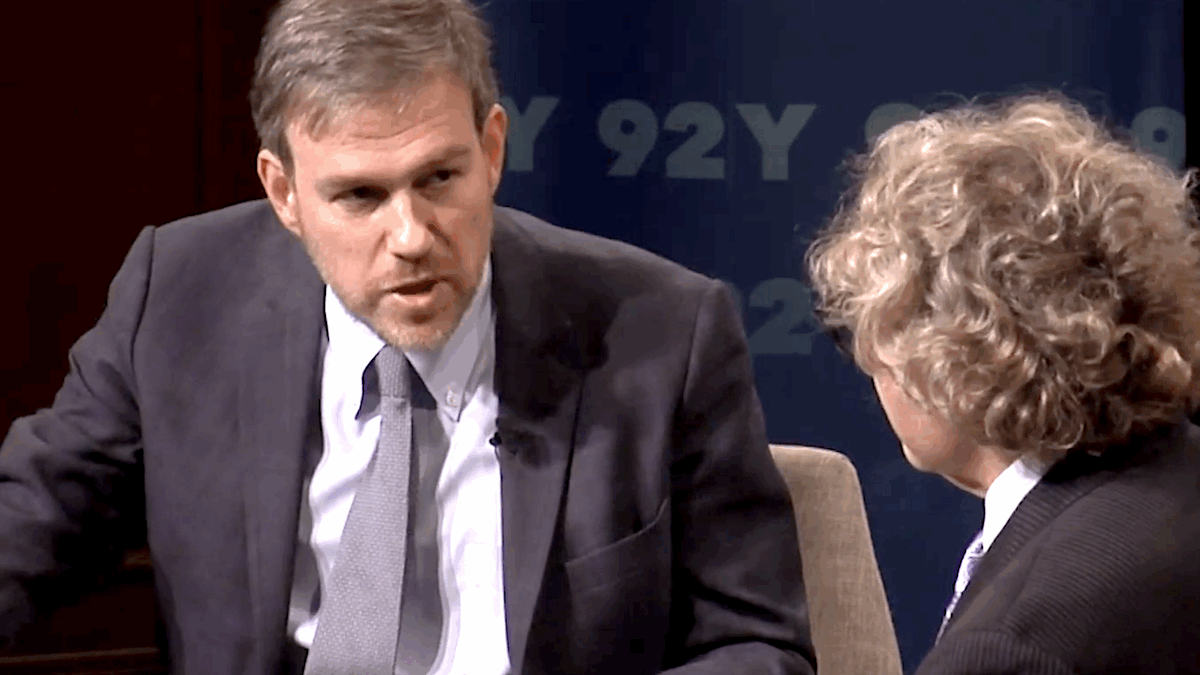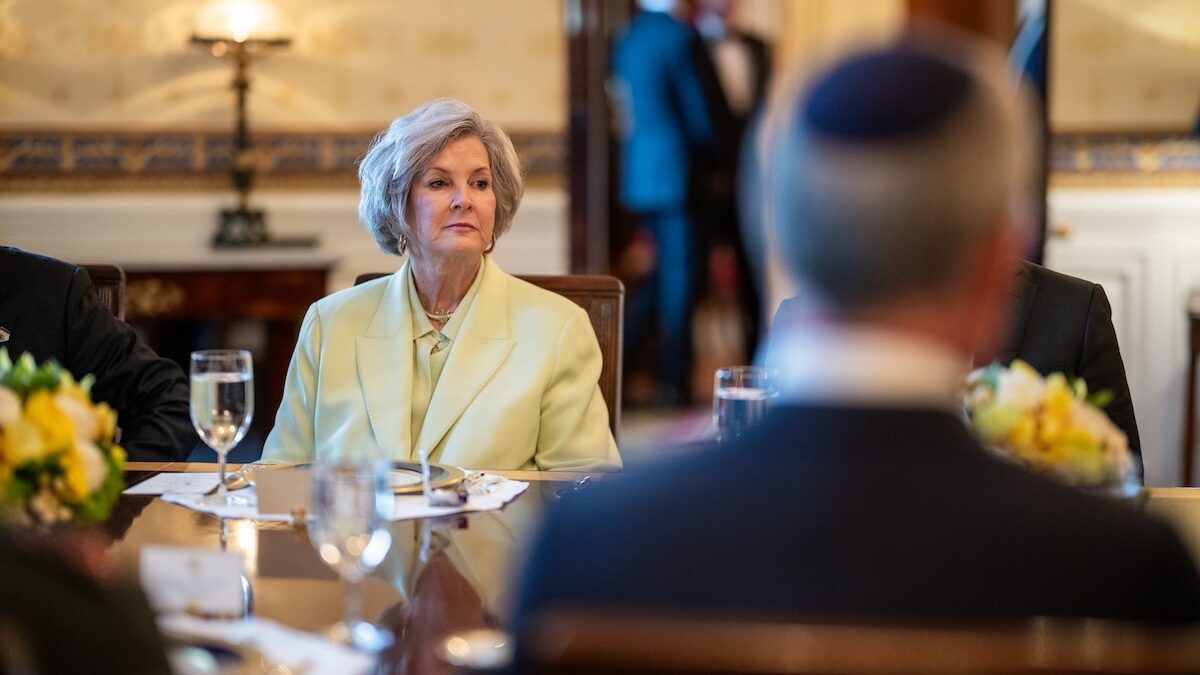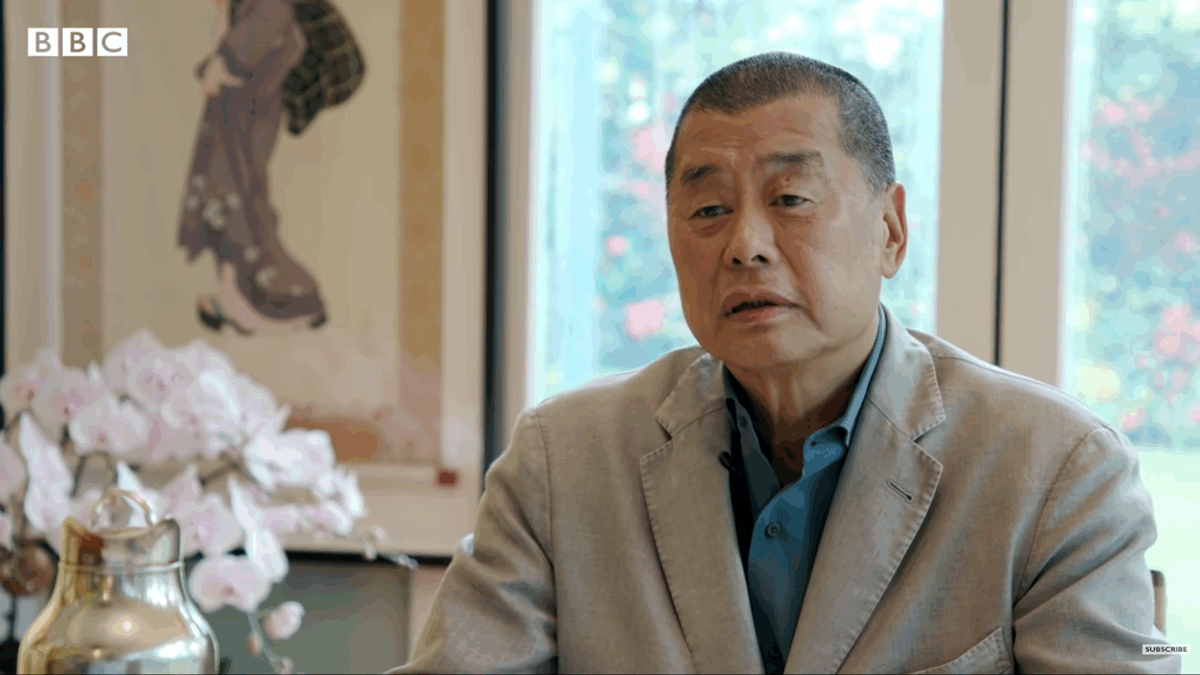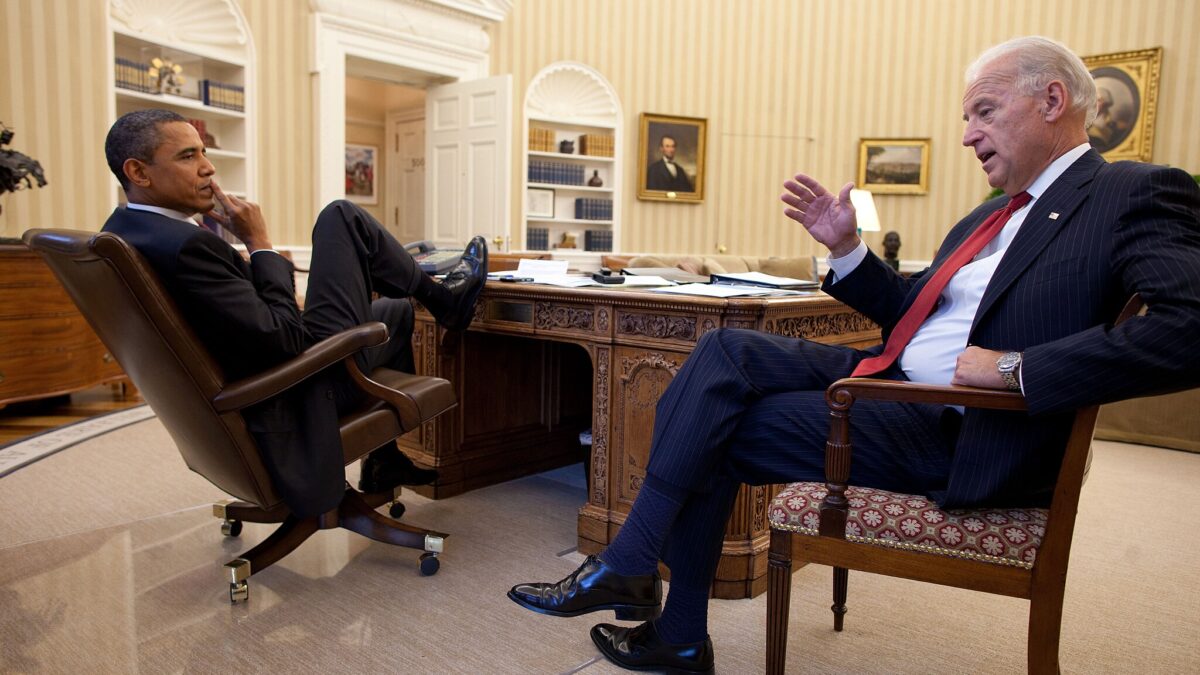
In the aftermath of the abominable media coverage of Arizona’s religious liberty bill, an editor shared his hypothesis that journalists care about freedom of speech and of the press because they practice them. And journalists don’t care about freedom of religion because they don’t.
But one of the most interesting things about modern media’s deep hostility toward the religious, their religions, and religious liberty in general is that press freedom in America is rooted in religion.
The John Peter Zenger case of 1735, argued successfully by Andrew Hamilton, wasn’t just an important legal event but an important symbolic event in the development of American freedom of expression. We remember Hamilton’s now-famous plea that truth should be admitted as a defense.
But perhaps we don’t understand that the members of the jury ruled in favor of press freedom because of their belief in the foundational importance of religion and religious liberty. The Zenger press freedom case was a “disputation on truth and on how truth is revealed to man,” noted David Paul Nord in 2006’s “A History of American Newspapers and Their Readers.” This is another way of saying “religion.” In the Cato letters printed in Zenger’s New York Weekly Journal, it was argued that each individual had not just the right but the duty to seek truth in his own way. From the book (emphasis mine):
“Every man’s religion is his own,” Cato declared, “nor can the religion of any man, of what nature or figure soever, be the religion of another man, unless he also chooses it; which action utterly excludes all force, power or government.”
The media now call people who agree with this notion “bigots” or “Jim Crow” types. Sometimes they’re more nuanced and just write shockingly biased articles about religious liberty issues. (My favorite was the time a media outlet — Religion News Service, of all places — defiantly put scare quotes around “religious liberty” and then defended the obnoxious practice.)
Anyway, back when individual reason and conscience were the way to divine truth, the authority of human law could never be absolute. Nord wrote that Americans have been “strangely intolerant libertarians, often suppressing individual liberties in the name of a more transcendent freedom.” Or we used to be, at least. Now we hear from some of media’s biggest elites that transcendent freedoms are to be obliterated in favor of individual liberties, and that opposition to this notion is the real enemy. More on that in a bit.
The First Amendment begins with religious liberty because (and even our non-traditionally religious Founders agreed with this), all freedom of expression — speech, press, assembly, etc. — is rooted in the importance of man determining truth according to his own conscience.
So What’s That Have To Do With Our Modern Media?
Moving forward nearly 300 years, we have a press that loathes and works actively to suppress this religious liberty, as confident in being on the “right side of history” as they are ignorant of natural rights, history, religion and basic civility.
A broad religious liberty bill — renamed by a juvenile and nakedly activist press as “anti-gay” — gives us a good opportunity to see this dynamic in action.
Perhaps a framework for understanding the truth-avoiding goat rodeo the media participated in is in order. Here’s one provided by Jon Swerens, which he calls the “OOOOOPSI” model:
Opportunity: First, we need a hot-button event that is a proper catalyst for the cycle. Recent examples were supplied by Chick-fil-A, Hobby Lobby, Susan G. Komen, and now, Arizona’s proposed law.
Outrage: Next, those on the opposite side of the culture wars make a lot of noise about “fairness” and “bigotry” and “tolerance.” Maybe they have a point, or maybe not, but it’s an important step in the news cycle.
Opposition: Then, the national media by and large adopts the definitions brought to them by the outraged. For example, in this week’s Arizona story, the media labeled the bill “anti-gay,” without the scare quotes. Such labeling was a tremendous victory for the outraged.
Oversimplification: As a part of its coverage, the media fails to add any nuance to the debate or closely examine the actual facts of what’s being argued, preferring to cover the horse race of two competing interests beating each other up.
Overreach: At some point, a mainline media outlet gets too cocky and goes a step too far in its boosterism. Other media momentarily shrink back in embarrassment.
Pendulum: Prompted by this misstep, a few media commentators rub their chins and publish thoughtful analysis pieces that ask if everyone is being a little too hard on the accused. The accused is still wrong, mind you, but we can be nicer about it.
Silence: After this, coverage ceases as the nation’s attention runs elsewhere.
Introspection: Finally, months later, on a Sunday news program, journalists will gather and ruminate about how they unfairly overstated one side of the debate. They pledge to do better next time.
Let’s agree to pretend that the media ever hit the Introspection stage and let’s also set aside the Opportunity and Outrage issues. Note the key point in “Opposition,” which is that the media adopt the labels of one side in a dispute. This couldn’t be more common, which explains why “religious liberty” gets scare quoted but “same-sex marriage” does not. In most cases, the media only scare quote those things they think are highly debatable or untrue. So even though religious liberty is fairly well ensconced in the Constitution and in the Religious Freedom Restoration Act and what not, it gets scare quotes. “Abortion rights,” which opponents believe is an oxymoron since no one actually has the right to take the life of another, even if the Supreme Court of the United States say otherwise? Well, missy, that’s settled law. And if you’re confused about it, you can ask the Susan G. Komen Foundation what we in the media do to people who don’t toe the line. We destroy them… for fun. On this issue, we help our friends (Wendy Davis, Kermit Gosnell) and we destroy our enemies (War on Women, anyone?).
Or take marriage, which natural marriage supporters believe is a euphemism, more or less, for “penis+vagina=elaborate consequences.” So for them, “same-sex marriage” is an ontological impossibility, or at the very least an issue on which some thought should go into the consequences of redefining that equation. After the media malpractice on this issue, one wonders if we’ve been fully brainwashed away from even understanding this topic in any way. Basically, some people, known colloquially as “all people throughout all space and time in all religions and lands until 15 minutes ago,” believed that marriage was a nice way of saying “men and women are different and complementary and this is the way we organize their relationship in all its complexity, including all the norms and benefits and dangers that occur when a penis enters a vagina.” Marriage used to be the way we said that, more or less. And the penis and vagina parts are actually key to this entire shebang. See: human history. Or, if you are in any way confused about this, ponder how your own existence came about. Hint: penis and vagina. In any event, it’s easier to remove scare quotes, adopt the language, and hunt down and vilify all those who disagree.
For a particularly crafty look, here’s CNN redefining religious liberty not as “religious liberty” but as the “‘freedom’ to discriminate.” Brilliant. Even if, you know, terrifying and Orwellian. And I do mean Orwellian. Here he is on the matter:
At any given moment, there is an orthodoxy, a body of ideas, which it is assumed that all right-thinking people will accept without question. It is not exactly forbidden to say this, that, or the other, but it is ‘not done’ to say it . . . [And] anyone who challenges the prevailing orthodoxy finds himself silenced with surprising effectiveness. A genuinely unfashionable opinion is almost never given a fair hearing, whether in the popular press or in the highbrow periodicals.
Particularly Egregious Idiocy
In this case, wholesale adoption of activist language is particularly egregious. What Arizona was considering was known as a RFRA bill. The original federal legislation was adopted after a bad Supreme Court ruling delivered by Antonin Scalia that limited religious freedom for Native Americans who smoke peyote as part of their religion. Congress realized this was a big problem and so they authored the Religious Freedom Restoration Act (RFRA) of 1993, introduced by none other than Chuck Schumer. From Wikipedia:
The Smith decision outraged the public. Many groups came together. Both liberal (like the American Civil Liberties Union) and conservative groups (like the Traditional Values Coalition) as well as other groups such as the Christian Legal Society, the American Jewish Congress, and the National Association of Evangelicals joined forces to support RFRA, which would reinstate the Sherbert Test, overturning laws if they burden a religion.[8] The act, which was Congress’s reaction to the Lyng and Smith cases, passed the House unanimously and the Senate 97 to 3 and was signed into law by U.S. President Bill Clinton.
And for those who worry about government encroachment against religious liberty, the bill has turned out to be a godsend. Hundreds of Americans of various religions have used RFRA to have even an opportunity to fight back against government violations against religious liberty. States have also adopted RFRA legislation, to help navigate the difficult borders of religious liberty vs. government action.
Have you heard of the Little Sisters of the Poor? Their only chance in their fight against the government is RFRA.
And so Arizona was tweaking its own RFRA statutes to expand in a couple of areas. A group of 12 law professors, some of whom support same-sex marriage and some of whom weren’t even sure the legislation was a good idea, but all of whom are religious liberty experts, tried to speak into the media-induced blindness regarding this bill:
SB1062 would amend the Arizona RFRA to address two ambiguities that have been the subject of litigation under other RFRAs. It would provide that people are covered when state or local government requires them to violate their religion in the conduct of their business, and it would provide that people are covered when sued by a private citizen invoking state or local law to demand that they violate their religion.
Most RFRA cases don’t deal with the sudden clash between religious liberty and same-sex rights, but some do. And even though most Americans probably wish tolerance were a two-way street — where some people need to work to tolerate those attracted to members of the same sex while others need to tolerate those with different religious beliefs — I think current jurisprudence favors the sentiment expressed by Chai Feldblum, a legal scholar and gay-rights activist later appointed by President Obama to the Equal Employment Opportunity Commission:
“There can be a conflict between religious liberty and sexual liberty, but in almost all cases the sexual liberty should win because that’s the only way that the dignity of gay people can be affirmed in any realistic manner.”
Outside of American newsrooms, Feldblum’s views aren’t universally shared. In fact, some find that in a choice between sacrificing religious liberty and expanding gay rights, they might go the other way. There are always conflicts with religious liberty — our first freedom. And they’re difficult to navigate. Religious liberty — and having the freedom to determine truth without government force — was what the Zenger trial was all about and no one is (yet) claiming that it was actually about bigots against gay rights. Of the hundreds of RFRA cases, I’d be surprised if more than a tiny handful had to do with gay anything, in fact. We do know that no reporter investigated how many RFRA cases involve gay issues. Is it greater than zero? I don’t think we know.
Either way, a broad religious liberty bill, one that in its national version was introduced by Chuck Schumer and signed by Bill Clinton after passing with overwhelming majorities in both houses of Congress, becomes, in the high-brow parlance of the Associated Press and the Washington Post, “anti-gay.”
By this standard, all legislation could be anti-gay. How many gay people are harmed by restrictions on gun rights? Ergo, gun control is anti-gay. How many unborn gays are terminated via abortion? Pro-choice laws are anti-gay. How many taxes are levied on gay people? All taxes are anti-gay. It only makes sense to call religious liberty anti-gay if you think that the only people in America are that tiny fraction of gay people that might ever be involved in suits where RFRA is argued. And even if you took that position, RFRA still wouldn’t be “anti-gay” since, as that rag-tag group of religious liberty professors put it:
But nothing in the amendment would say who wins in either of these cases. The person invoking RFRA would still have to prove that he had a sincere religious belief and that state or local government was imposing a substantial burden on his exercise of that religious belief. And the government, or the person on the other side of the lawsuit, could still show that compliance with the law was necessary to serve a compelling government interest. As a business gets bigger and more impersonal, courts will be come more skeptical about claims of substantial burden on the owner’s exercise of religion. And as a business gets bigger, the government’s claim of compelling interest will become stronger.
Of course, we can safely assume that none of the reporters or editors who promulgated the “anti-gay” rhetoric had read the legislation, however brief it was (all of two pages). By way of example, see what the New York Times deceitfully wrote here with the quote above:
“The measure would have allowed business owner [sic] to refuse to serve gay people and others if doing so ran counter to their religious beliefs.”
Ditto the Associated Press, which tweeted:
BREAKING: Arizona governor vetoes bill allowing religious reasons for refusing service to gays.
— The Associated Press (@AP) February 27, 2014
It’s just simply not true. There’s no clearer way of saying that. It’s not true. To repeat, “nothing in the amendment would say who wins in either of these cases.” What’s more — and this will blow the big minds at the big papers — it’s not even illegal for a business in Arizona to deny service to someone because they are gay! Somehow the knuckledraggers in Arizona have managed to live with this freedom and not operate “straights only” businesses. But, again, this just speaks to how off-target these headlines and ledes about RFRA bills have been. By the way, if the New York Times was doing reporting instead of extreme advocacy, it would note these truths — that Arizonans are free to discriminate but don’t and that this bill had nothing to do with that issue. But even days later, they’re promulgating untruths. New York Times national legal correspondent Erik Eckholm praised an article by a colleague about the “Arizona Bill Allowing Refusal of Service to Gays” and how that bill hurt Republicans.
In other words, truth be damned … now how can we use this story to gain political points?
Even Reason, whose conception of liberty this week is not broad enough to include religious liberty, tweeted out this untrue statement about the bill:
Arizona Governor Vetoes Religious Bill Targeting #LGBT Customers – http://t.co/E50B9d0TZF
— reason (@reason) February 27, 2014
One journalist who shares my dismay at how this story was covered sent me a link to one Los Angeles Times story with this amazing sentence buried after a half-dozen passages claiming various things about the bill being “anti-gay”:
Technically, the bill would have expanded the definition of the free exercise of religion, allowing a faithful person to adhere to his or her beliefs in practice.
You don’t say. Of course, perhaps the most telling line even there is “in practice.” As opposed to where? In his or her head? Oh how far we’ve come from the Zenger trial.
They Think They’re Deep Thinkers
As I type this, a reporter is telling me that another reporter is struggling to understand even the most basic distinction between serving gay people and participating in an act that violates religious conscience. Cathy Lynn Grossman, the former USA Today religion reporter, (now at Religion News Service, naturally) tweeted out her deep thought the other day:
.@brithume @EWErickson If baking cakes = participation then evangelical bakers couldn’t cater for Catholic, Jewish religious events.
— Cathy Lynn Grossman (@CLGrossman) February 21, 2014
Grossman, seemingly confused about whether reporters should ask questions or tell evangelicals what they believe, doubled down in her comments with confidence and brio, completely unaware how her armchair exegesis was laughable — or at least terribly unconvincing — to those who had pondered these comments outside the media echo chamber.
All sorts of media figures got into debates about whether various religious groups were right or wrong and whether they themselves would do something that someone else might not do. As a friend on Facebook joked:
What I’ve learned from the internet in the last couple days is that, if something isn’t against your religion, it’s apparently not against mine either.
The whole point of religious freedom is that it’s extended to the people who are — from at least someone’s perspective — completely wrong. If everyone in society agreed on religion, there would be no need to protect it. So even if somehow all the big minds in a media outlet were pretty darn sure they’d figured out definitively that someone else’s systematic theology was wrong — it wouldn’t matter one whit.
Speaking of RNS (which also has some fantastic religion reporters, for what it’s worth), scare quote defender Mark Silk tweeted out this take:
What will happen if Jan Brewer signs the Religious Freedom to Discriminate Against Gays Restoration Act: http://t.co/6evAWMlm8C
— Mark Silk (@directorsilk) February 26, 2014
Subtle. Nuanced. Hilarious.
Then the RNS “religious freedom editor” excitedly linked:
Debate!!! Should Anti-Gay Churches Have Their Tax Exempt Status Revoked? http://t.co/aHWVOYNc8C
— Brian Pellot (@brianpellot) February 28, 2014
Once we’re done with this silly notion of religious liberty, I look forward to RNS suggesting that we must tackle free speech since some people still think they have the right to discuss sexual morality in ways different than the cast of Glee. Or maybe we should get rid of press freedoms because some people are still able to note how oppressive and uncivilized our major media are when covering issues such as these.
Oversimplification
Helping us see how the media’s “oversimplification” works is National Journal’s Ron Fournier, who likes to present himself as a down-the-middle guy, focused on nuance (a notion I dispelled recently in “Reading Is Hard. Calling People Racists On Twitter, Though, Is Easy.”) In light of what we’ve learned about RFRA and state RFRAs and tweaking of state RFRAs, here’s his high-level response. If you guessed it would involve calling people racists on Twitter, you win!
Conservatives defending their stance on the Az gay marriage bill remind me of the time Orval Faubus told me he wasn’t a racist. Typing …
— Ron Fournier (@ron_fournier) February 27, 2014
Come on, Ron. There has got to be more to life than calling everyone who thinks differently than you a racist. There simply has to be.
On Twitter the night of the veto, I saw many people tweet out this image, which shows two different ways that media outlets headlined the news:

Of course, the real story is that almost every media outlet followed the “didn’t-read-the-bill-but-we-will-pretend-otherwise” approach of the Washington Post. But so many reporters tweeted this out as if it made the Wall Street Journal look bad, not everyone else.
There are countless more examples (from the Washington Post to local papers) of how poorly reporters have handled this topic and how quickly they’ve joined the mob of activism against civil or rational discourse.
From Tolerance To Tyranny
Religious liberty is a deeply radical concept. It was at this country’s founding and it hasn’t become less so. Preserving it has always been a full-time battle. But it’s important, because religion is at the core of people’s identity. A government that tramples religious liberty is not a government that protects economic freedom. It’s certainly not a government that protects conscience rights. A government that tramples religious liberty does not have expansive press freedoms. Can you think of one country with a narrow view of religious liberty but an expansive view of economic freedom, freedom of association, press freedoms or free speech rights? One?
A media less hostile to religious liberty would think less about scoring cheap political points, creating uncivil political climates and disparaging institutions that help humans flourish. A media with a higher regard for truth would, it turns out, have a higher regard for religious liberty.
Sadly, we seem to have left the world of reason and tolerance. Could our media climate demonstrate that any better? And what lies ahead, if left uncorrected, is illogical and tyrannical. Freedom of religion was the central principle in the moral case of our country. Once that’s gone, how long can the Republic stand? Does anyone even care?









